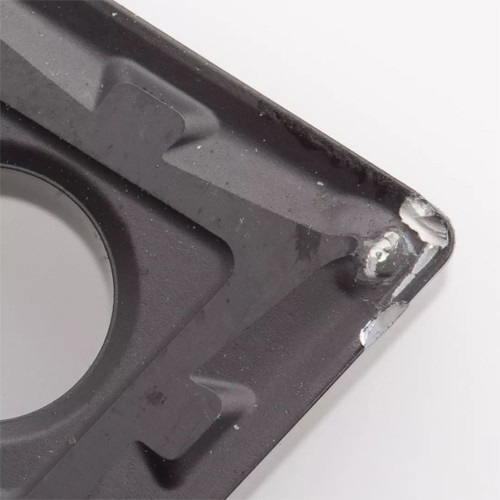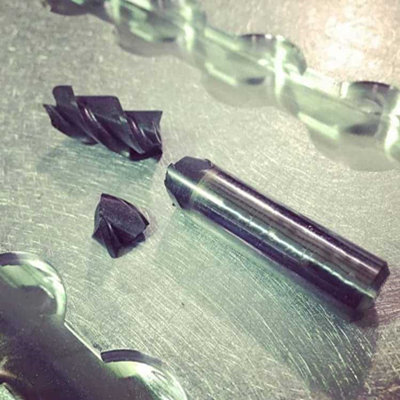

1) The cutting edge is slightly collapsed
When the workpiece material structure, hardness, allowance is not uniform, the large front Angle leads to the cutting edge strength is low, the process system rigidity is insufficient to produce vibration, or intermittent cutting, poor grinding quality, the cutting edge is easy to occur micro-collapse, that is, the edge area appears tiny caving, gap or spalling. In this case, the tool loses some of its cutting power, but it continues to work. As the cutting continues, the damaged part of the edge area may expand rapidly, leading to greater damage.
2) The cutting edge or tip is broken
This breakage usually occurs under worse cutting conditions than the one that causes the edge collapse, or is a further development of the collapse. The size and scope of the collapse are larger than the micro collapse, so that the tool completely lost cutting capacity, and had to stop working. The collapse of the knife tip is often called off the tip.


3) The blade or knife is broken
When the cutting conditions are very bad, cutting dosage is too large, there is impact load, the blade or tool material has a micro crack, due to welding, grinding in the blade residual stress, coupled with the operation of factors such as careless, may cause the blade or tool break. After this form of breakage occurs, the tool cannot be used any longer, resulting in the abandonment of the tool.
4) The blade surface is peeled off
For materials with great brittleness, such as carbide, ceramics, PCBN and so on with high TiC content, due to defects or potential cracks in the surface tissue, or residual stress in the surface layer due to welding and grinding, it is easy to produce surface spalling when the cutting process is not stable enough or the tool surface is subjected to alternating contact stress. Spalling may occur on the front knife surface, and the knife may occur on the back knife surface. The spalling objects are flaky and the spalling area is large. Coating tool spalling is more likely. The blade can continue to work after slight spalling, but will lose cutting ability after serious spalling.
5) Plastic deformation of cutting position
Plastic deformation may occur in tool steel and high speed steel due to their low strength and hardness. When the hard alloy is working in the state of high temperature and triaxial compressive stress, the surface plastic flow will occur, and even the plastic deformation surface of the cutting edge or tool tip will cause collapse. Collapse generally occurs in the case of large cutting and processing of hard materials. The elastic modulus of TiC based cemented carbide is less than that of WC based cemented carbide, so the plastic deformation resistance of TiC based cemented carbide is accelerated or rapidly fails. PCD and PCBN do not have plastic deformation.
6) Hot crack of blade
When the tool is subjected to alternating mechanical load and thermal load, the cutting part of the surface due to repeated thermal expansion and contraction, inevitably produce alternating thermal stress, so that the blade fatigue and cracking. For example, when carbide milling cutters are milling at high speed, the cutter teeth are subjected to periodic impact and alternating thermal stress, and comb cracks occur on the front cutter face. Although some tools do not have obvious alternating load and stress, but because the surface layer and the inner layer temperature is not consistent, will also produce thermal stress, coupled with the tool material inside the inevitable defects, so the blade may also produce cracks. Sometimes the tool can continue to work for a period of time after the crack is formed, and sometimes the rapid expansion of the crack leads to the blade breaking or severe spalling of the blade surface.
Discover the core advantages of EDM machining for PCD saw blades, including non-contact processing, high precision tooth profiling, complex geometry capability, and improved efficiency for high-end cutting applications.
A technical guide to selecting diamond grinding wheels for PDC cutter . Learn how ceramic and resin bond diamond wheels improve efficiency, precision, and tool life in oil & gas and mining applications.
Add: Zhongyuan Rd, Zhongyuan District, Zhengzhou, 450001, Henan, China
Tel: +86 17700605088